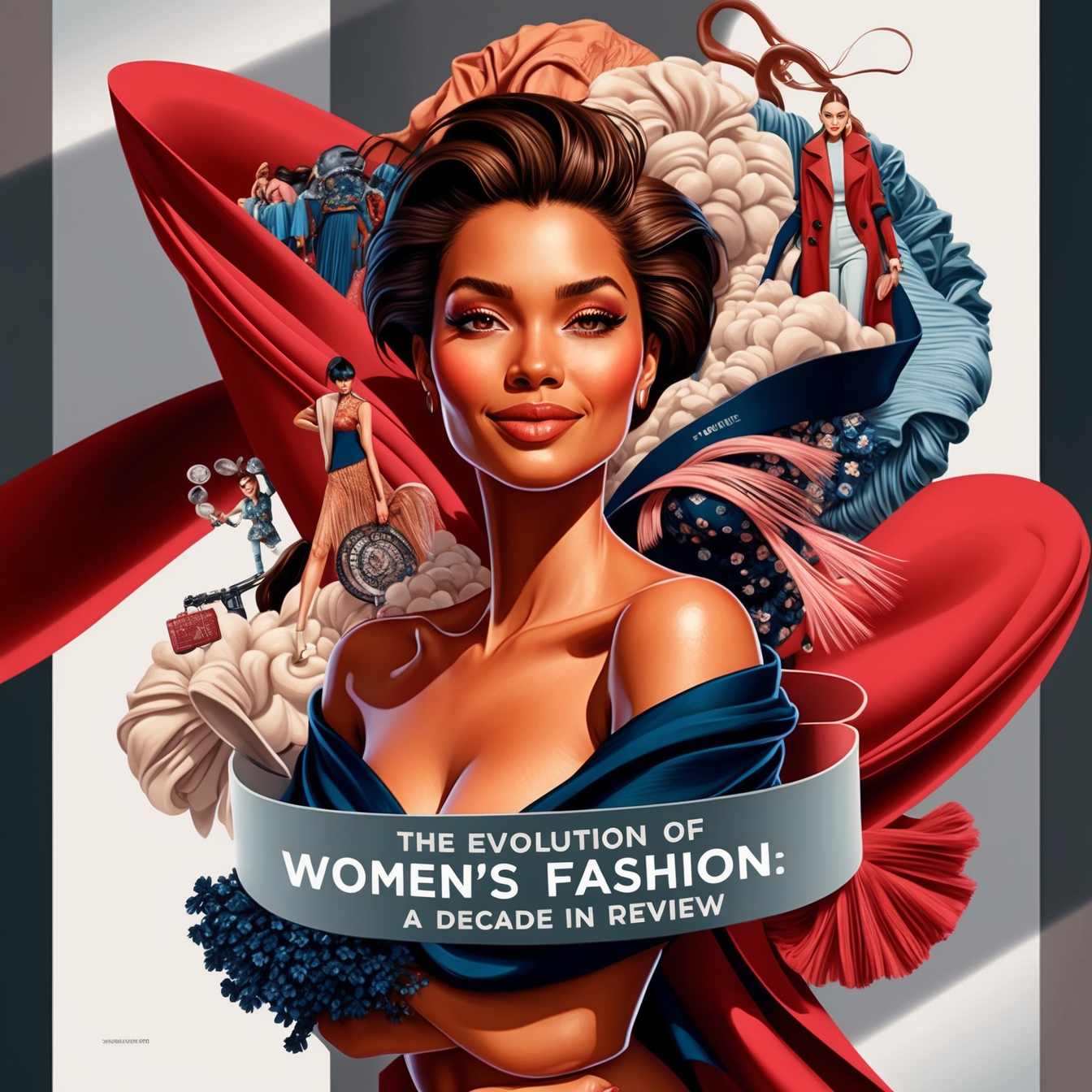Over the past decade, women’s fashion has undergone remarkable transformations, blending traditional styles with modern innovation. From the rise of sustainable fashion to the resurgence of vintage-inspired looks, the last ten years have been marked by dynamic trends that reflect cultural, social, and technological influences. Let’s take a closer look at the evolution of women’s fashion throughout the 2010s and beyond.
1. The Rise of Sustainable Fashion
One of the most significant shifts in women’s fashion over the past decade has been the increased focus on sustainability. As environmental awareness grew, many designers and brands embraced eco-friendly materials and ethical production methods. Slow fashion became a movement, urging consumers to invest in high-quality, long-lasting pieces. Renting clothes became a popular option for sustainable fashion, offering a way to enjoy trends without the environmental impact. This shift also saw the rise of second-hand and vintage shopping as fashionable and responsible choices.
2. Athleisure: The Marriage of Comfort and Style
Athleisure took the fashion world by storm in the 2010s, blending athletic wear with everyday fashion. Leggings, track pants, and sneakers became wardrobe staples, not just for workouts but for casual and even semi-formal occasions. The emphasis on comfort without sacrificing style was a key driver of this trend, which continues to evolve with innovative fabrics and designs.
3. A Return to 90s and 2000s Fashion
The resurgence of 90s and early 2000s trends played a significant role in shaping the fashion landscape of the last decade. Crop tops, chokers, platform shoes, and oversized denim jackets made a major comeback, as younger generations embraced nostalgia for these past styles. Many designers paid homage to the grunge, minimalist, and glam aesthetics of these eras while giving them a modern twist.
4. Gender Fluidity in Fashion
Another defining trend of the decade has been the blurring of traditional gender boundaries in fashion. Designers began to explore androgynous and gender-neutral styles, creating collections that transcended binary expectations. Women’s fashion saw the rise of tailored suits, oversized blazers, and looser silhouettes, reflecting a broader societal shift toward inclusivity and self-expression.
5. Statement Pieces and Bold Prints
Throughout the 2010s, bold prints and statement pieces became fashion mainstays. Animal prints, neon colors, and exaggerated silhouettes helped women express individuality and creativity, especially during summer fashion trends, where bright and playful styles dominated. This decade saw a focus on personal style, with many choosing statement accessories, bold patterns, and unconventional combinations to stand out.
6. Technology’s Influence on Fashion
Advances in technology also made a significant impact on women’s fashion. From the rise of online shopping to the integration of wearable tech, such as smartwatches and fitness trackers, technology changed how women interact with fashion. Social media platforms like Instagram and TikTok became powerful tools for trendsetting, allowing influencers to shape fashion tastes and create viral styles.
7. The Power of Minimalism
While bold prints and exaggerated styles were popular, minimalism also gained traction throughout the decade. Many women embraced a simpler, more refined look, focusing on clean lines, neutral colors, and timeless silhouettes. Capsule wardrobes, which emphasize owning a smaller collection of high-quality pieces, became increasingly popular as women sought to declutter their closets and refine their personal style.
8. Diversity and Body Positivity
The 2010s were a transformative time for diversity and body positivity in fashion. Brands began to offer more inclusive sizing, and designers featured models of different body types, ethnicities, and backgrounds in their campaigns and on the runway. The growing movement for body positivity encouraged women to embrace their unique shapes and sizes, fostering a more inclusive and empowering fashion industry.
9. The Influence of Celebrity and Street Style
Celebrities and street style had an undeniable influence on women’s fashion during this decade. Must-have accessories, such as oversized sunglasses and statement bags, often set the tone for the season. Icons like Rihanna, Beyoncé, and the Kardashian-Jenner family helped popularize trends, while fashion weeks in major cities spotlighted street style as an essential component of global fashion culture. The democratization of fashion through social media also allowed everyday women to showcase their personal style, influencing trends in real time.
10. The Future of Women’s Fashion
As we move into the 2020s, women’s fashion continues to evolve, with an emphasis on sustainability, diversity, and individuality. Technology will undoubtedly play a crucial role, from innovative fabrics to virtual fashion shows. Women’s fashion is set to become even more inclusive, personal, and experimental, as designers and consumers alike embrace change.
Conclusion
The last decade of women’s fashion has been a period of transformation and innovation. From sustainability and minimalism to bold prints and gender-fluid designs, the evolution of women’s fashion reflects the changing values and priorities of modern society. As we look to the future, one thing is clear—women’s fashion will continue to break boundaries and inspire creativity.
